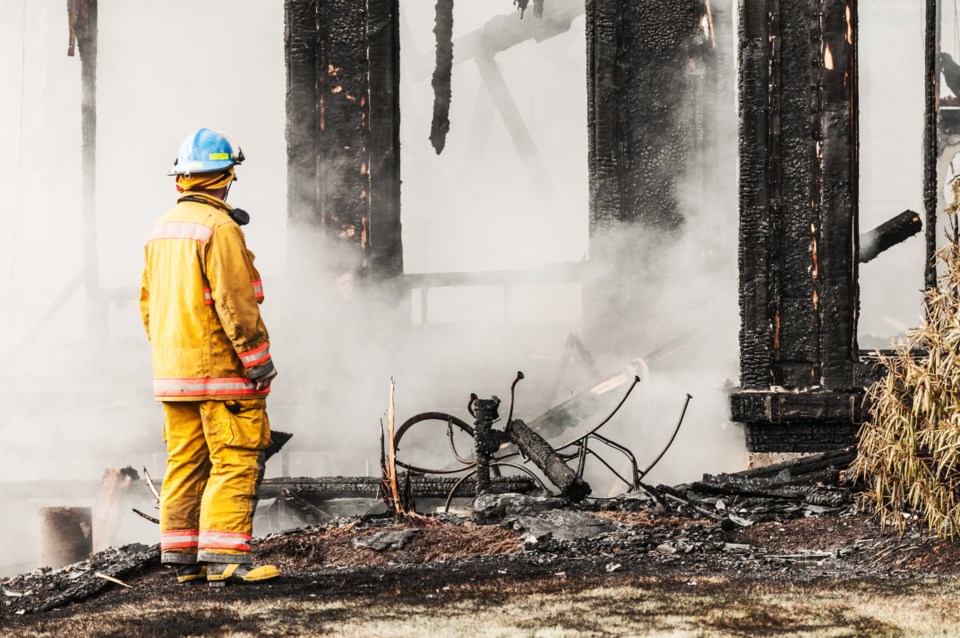Two fire departments in the Lower Mainland are evolving in order to meet the needs of their changing communities as they fight two public health emergencies — the COVID-19 pandemic and the opioid crisis.
Vancouver Fire and Rescue Services (VFRS) is looking to hire more than double its usual quota for the year. This is in response to not only the opioid crisis but also the sheer volume of calls received by the department.
“It is clear, however, that VFRS is stretched to its limits. The opioid crisis and overall rising City of Vancouver call rates have taken a toll,” said a Needs Assessment Study performed for VFRS by Darkhorse Analytics.
The department is nearing a tipping point, according to the VFRS Strategic Plan for 2019-2022.
In 2018, the department saw 82 incidents per 1,000 residents, while the Canadian fire services average ranged between 26 and 53 incidents per 1,000 residents. On average, Vancouver firefighters respond to twice as many incidents as the average firefighter in any other Canadian city.
As more career firefighters retire and others experience burnout from the pandemic and opioid crisis, the need to get more boots on the ground is increasing.
According to Matthew Trudeau, a fire information officer, 25 of the roughly 100 new hires will be working in Vancouver’s River District in order to meet the needs of the growing area.
“It was a response to the large number of people that are living down there, the record number of highrises and all the growth that's happening in that area to make sure that we're keeping up with demand,” Trudeau said.
The changing face of the department
With the influx of new hires, combined with increasing retirements, the department is looking at a younger workforce and changes in demographics.
The main objective will be to ensure that with the younger force and less overall experience, that they are equipped to meet the demands of the department.
“The challenge that [hiring] provides us is making sure that we have enough staff to train those members,” said Trudeau. “Where it takes an extraordinary amount of time and effort to, while people do come with minimum requirements, to make sure that they're trained and they're ready to respond.”
Langley Township's fire department is also in a hiring phase that includes bringing on 10 career firefighters. This is above their normal quota and is due also to retirements. Though Richmond is not currently slated for growth, over the last three years they have added 36 new firefighter positions.
While departments are gearing up to hire more personnel, there is no shortage of potential candidates. The Justice Institute of British Columbia (JIBC) found that enrolments in their fire program rose from 87 in 2020 to 156 in 2021.
Surrey suffers under the opioid crisis
VFRS is not the only department feeling the weight of the opioid crisis and pandemic. According to MLA Mike Starchuck, the biggest issue facing the Surrey Fire Service has been dealing with the public health emergency.
He says that the toll this takes ultimately leads to shortages of staff due to illness.
“I am sure that the staffing issues that are there to fill, because of sickness or injury or whatever the case may be, they're probably greater now than they can ever possibly be,” Starchuck said.
Larry Thomas, Surrey's fire Chief, said not only is the opioid crisis causing increased stress on the department but so too are low acuity calls.
“Additional staff is a short-term solution. In a city like Surrey that's growing constantly, there's always a request for additional resources when appropriate,” said Thomas. “And what's been really hard for planning purposes is this increasing workload and medical calls, whether it's driven by overdose or by these low acuity, non-life threatening medical calls.”
As a result, the department has added two additional medically oriented trucks in Surrey’s downtown in order to service the growing number of medical calls.
“We have to take a look at what the future looks like in the next budget cycle to say, do we actually have to have more people in the system because we're going to have more people off for extended periods of time.”



